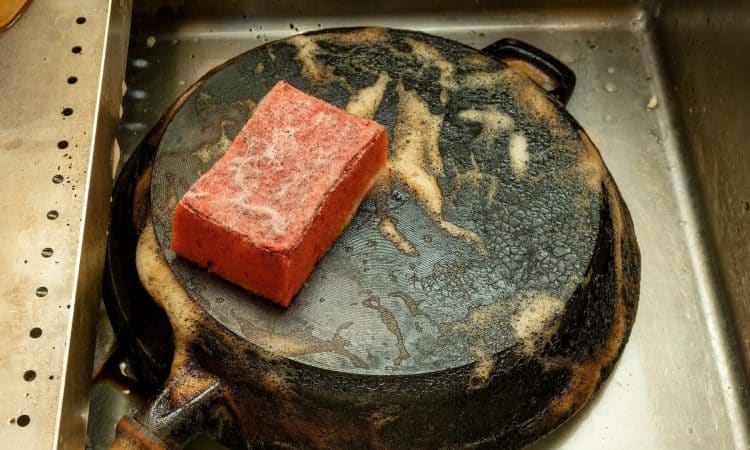
Damp sink-side sponges are the ideal environment for bacteria to proliferate, but to defend ourselves we have several tricks, from vinegar to baking soda.
It’s amazing what we can learn from bacteria when we look at kitchen sponges! It’s so important to take better care of them. To do this, just think about how scientists cultivate pathogens in warm, humid environments to study them. These environments provide them with lots of food. Our kitchens are similar! We can learn a lot from studying how pathogens grow on preparation and cooking surfaces, in sinks, on utensils, and most importantly, on sponges.
The list of bacteria that can proliferate there includes pathogens that can cause serious problems, such as Salmonella, Campylobacter, Staphylococcus, Escherichia coli and Listeria. And in the specifics of sponges, even more targeted research by the American Society for Microbiology reveals that Salmonella, Staphylococcus aureus and E.coli can live up to 16 days on the surface and especially inside it. Incidentally: bacterial growth experiments carried out by the Institute also included microfiber tea towels, where pathogenic bacteria can lodge for up to 13 days.
Is it important to clean kitchen sponges?
It’s not exactly news that the world is full of bacteria, but that of kitchen sponges is a textbook example. Not least because, in the long list of daily tasks, cleaning them when we’re exhausted from the daily grind and perhaps have just put the kids to bed isn’t exactly at the top of the list. Instead it should, as American research has shown. That’s why experts recommend changing the way we think about sponges – pathogens like to be alive, and will take every opportunity to ensure their own survival, as all bacteria do, even when the kitchen is clean – by arming ourselves in turn. Here’s how to defend ourselves against the invisible onslaught.
7 tips on how to clean kitchen sponges
- In general, sponges should be allowed to dry after use: they don’t stack on the side of the sink, and they certainly don’t “marinate” in a soap dish. Between uses, they should be placed in the dish rack, upright.
- Baking soda is a basic or alkaline compound that cleans by raising the pH. Just dilute it in a bowl with a little water to create a sort of paste, and move the sponge around in it for a few minutes, on all sides. Then wring it out and let it dry. The baking soda bath will not completely disinfect the sponge, but it is a good start to make it hostile to bacteria.
- Vinegar also works because it is acidic, so it will dramatically lower the pH of the sponge, and is even more hostile to bacteria than baking soda. A full power white vinegar bath for five minutes in a dish or small bowl is recommended. Estimates vary, but vinegar baths are estimated to kill about 99.6 percent of bacteria.
- Bleach can be an ally, but unlike the previous two remedies it is not harmless to the human body if ingested. And here we are talking about soaking the sponge with which we wash dishes, cutlery and glasses. According to researchers, it is capable of eliminating 99.9 percent of bacteria, but in case you decide to employ it, you have to put into account many, many rinses. For soaking, however, three-quarters of a cup of bleach in four and a half liters of water is recommended.
- Microwaving can also be used: research by the U.S. Department of Agriculture shows that radiation kills an extremely high percentage of bacteria (99.9 percent, as above).
- Hot water helps, and boiling the sponge for a few minutes reduces the bacterial load.
- The dishwasher is another option. Basically, it is like boiling, but letting the machine do it for much longer. Although washing the sponge by hand, aided by baking soda or vinegar and wringing it out several times while doing so, has the advantage of gradually eliminating dead bacteria. Which otherwise become ideal food for new pathogens.

